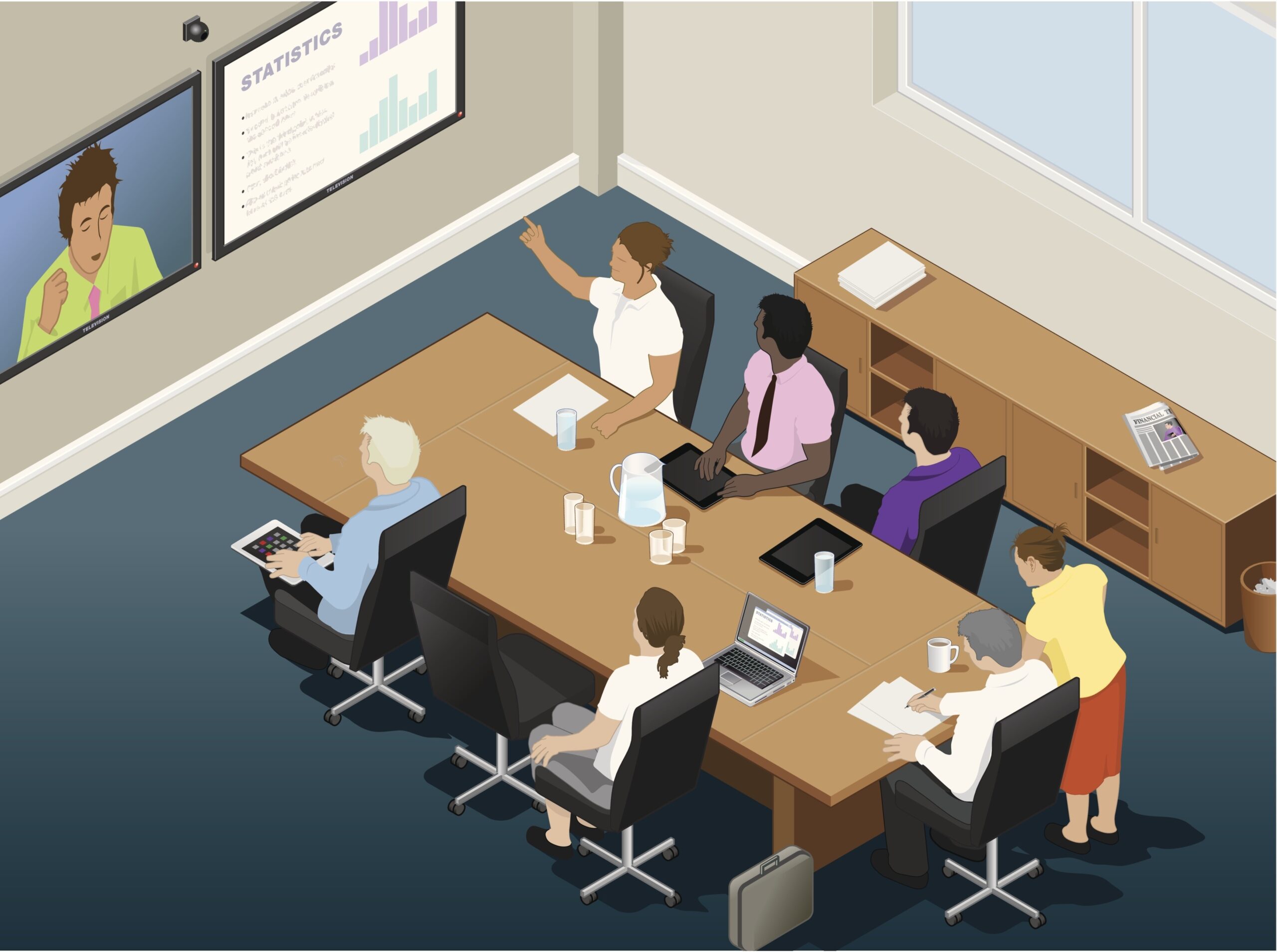We recently received an honest attempt by an organization to better understand the conferencing technology solutions available in today’s marketplace via a Request For Information (RFI). Interestingly enough, it was a relatively blank canvas asking for:
- Inventive solutions to provide high quality teleconferencing abilities for meetings and
- The ability to offer interactive webinars as an educational tool.
This is a great opportunity for us to educate and share the collaborative solutions the organization has available to them. And in this case, the blank canvas allows us to provide a multitude of solutions.
The Organization and Their Business Problem
The organization currently has meeting rooms across the province that hold over 30 people. Each room is equipped with a poor quality audio solution and they are unable to effectively connect their internal and external stakeholders using these rooms via teleconference today. They would also like to be able to do remote training. Today that can only be done through self-study materials.
The Organization’s Requirements:
- To conduct training remotely using leading edge collaborative technologies
- The only room specification provided is that a round table seats up to 35 people
- They are interested in “teleconferencing,” “webinars” and it would be nice to have distance education
This approach could result in a wide variety of responses.
Will the solutions presented meet their needs? Do they really know what they want and do they know what technology is available?
I think the answer to each of these questions is “No”.
The focus will likely be low cost approaches to upgrade their audio phones in the rooms and offerings such as WebEx or GoToMeeting. But do these solutions really give the organization the high quality teleconferencing experience they are seeking?
The Risk of Using an RFI to Educate
This organization is trying to use a purchasing vehicle to educate themselves on the products available. This method is really a “hit and miss” approach because it depends on who in the marketplace takes the time to educate them on their choices by responding to their RFI. Typically, the best price wins in an RFI unless your proposal stands out for other reasons. To make your proposal stand out, you need to really understand your buyer’s needs.
You also need a buyer who is open to suggestions and has a good understanding of their needs.
But if the organization doesn’t know what they are looking for, how will they know when a really good solution is offered?
Finding a Solution for Connecting People
Using technology to connect people is a common-place activity however the sheer number of options available to do this is absolutely mind-boggling and getting clarity on a solution is difficult to achieve.
At a high level, organizations are looking to connect room systems and individuals together over distance for real-time communication.
3 possible combinations are:
- Room system to Room system(s)
- Room system to Individual(s)
- Individual to Individual(s)
Deciding which of these conferencing technologies are required for connecting over distance is critical in determining the level of collaboration that can be achieved.
The Velocity of Collaboration
Each of these different conferencing technologies brings a different dimension of richness to the collaborative experience. Frost & Sullivan wrote a very insightful whitepaper a few years ago about the “Velocity of Collaboration”. It was a sponsored whitepaper so it had some biases in it but the conceptual model was eye opening. They spoke about 6 different real-time conferencing modalities (if you boil it down there are really only the 4 above – unless you add in virtual world collaboration, which is only used at the fringes).
Never-the-less, the Velocity of Collaboration model is very useful and we have adapted it to consider the four conferencing modalities. Part II of this blog will detail this adapted Velocity of Collaboration model.
Once requirements for user based collaboration capability are determined, you can select the meeting room technologies and the individuals connecting into conferences. This process is critical. It avoids wasted effort and brings a cohesive approach to the technology roadmap your organization requires. By turning the patchwork of technology found in most organizations into a tapestry of technology, you’ve created an enabler to greater collaboration within the organization.
The ET Group has helped many organizations through this process. Please contact us if we can be of assistance to your organization.

